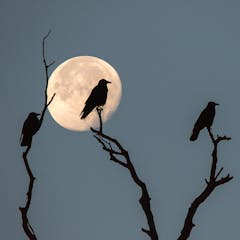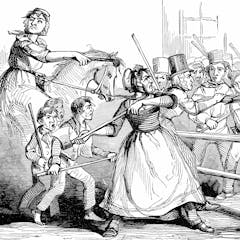
Articles on Victorian era
Displaying 1 - 20 of 43 articles

Architectural models are an effective way of showing the public what new major buildings will look like.

A group of determined women founded the RSPB, but they had great support behind the scenes by a little-known Argentinean naturalist.

The Rebecca riots saw Welsh farmers disguised as women destroy tollgates as a way of challenging what they believed was an oppressive taxation system.

People have invested emotionally in animals for thousands of years, but their financial situation directly impacts their ability to properly care for for their pets.

This well-researched book brings to life the odd case of Sir Roger Tichborne and those around him.

Police matrons in the 1800s opened the door for women to join the police force, yet most of us have never heard of them.

In the 19th century, several English women wrote accounts of their world travels. While considered by some as second-rate travellers, they were just as restless as their male contemporaries.

The 1859 book ‘Self-Help’ by Scottish journalist and physician Samuel Smiles was written in bite-sized pieces reminiscent of today’s wellness and lifestyle New Year tips.

‘In the Bleak Midwinter’ is now a treasured Christmas classic, but it didn’t start life that way – not in the UK, at least.

The journal of a Pre-Raphaelite writer might help explain today’s turn to spiritualism.

Today viewers may be preoccupied by the methods used by spirit photographers, but spirit photographs had a notable impact on the bereaved who commissioned the portraits.

Truth is sometimes stranger than fiction when it comes to the magicians of the Victorian era.

The afterlife envisioned by spiritualism appealed to women who rejected the idea that their unbaptized children could be damned to hell.

Victorian-era engineering is struggling under decades of underinvestment.

Colonel Majendie was also a pioneer in forensic investigations.

In the 19th century, Purim became an occasion to hold fancy dress parties, the proceeds from which were given to charities. These parties helped American Jews gain a standing among the elite.

How 19th-century audiences could experience the sound of live theatre in their living rooms.

Dickens’s novels highlighted the poverty of education for the working classes. The all-important Education Act was finally passed in the year of his death.

Almost as soon as Dickens died in 1870, writers and illustrators began to take liberties with his life and career.

The statue was part of a push in the Victorian era to create mercantile heroes. Colston’s slaving activities were conveniently glossed over.
